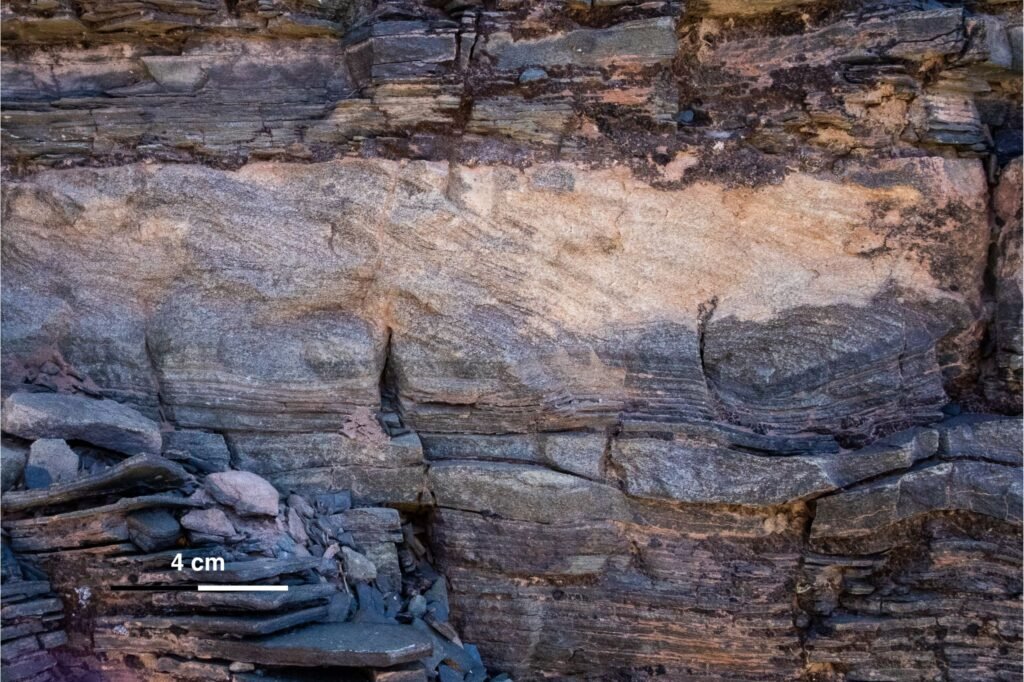These features form when underlying or adjacent sand bodies are dislodged and displaced by glacial loading, mass movement, or fluid overpressure. They may be rafted by debris flows or dislocated by glaciotectonic thrusting and folding, often in water-saturated settings.
Significance
Deformed sand blocks indicate episodic disturbance in the sedimentary record and are commonly associated with glaciotectonites, slump deposits, or debris flow margins. Their presence highlights instability during or shortly after deposition and helps reconstruct processes like ice-push deformation, mass wasting, or rapid burial events.

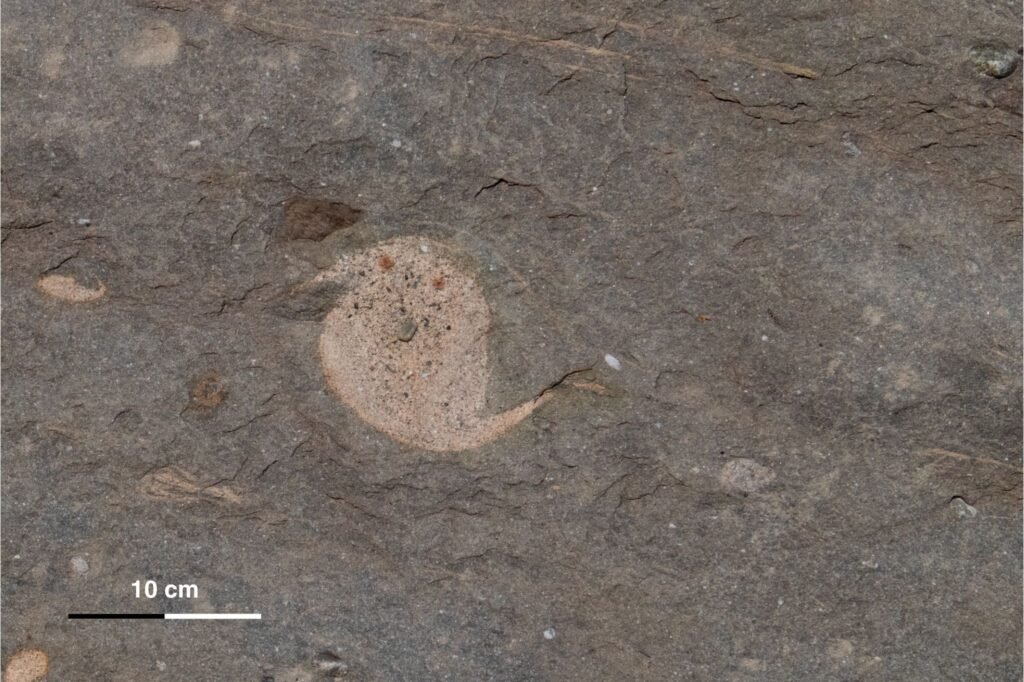
These structures develop under conditions of high pore fluid pressure, often caused by rapid sediment loading, meltwater influx, or seismic activity. Fluidized sands or silts are injected into weaker or overlying beds, disrupting the original stratification. In glacial and paraglacial environments, triggers include meltwater overpressure, ice loading, and mass transport events.
Significance
Injection structures are key indicators of fluidization and instability in sedimentary environments. Their presence reflects dynamic depositional settings and processes such as rapid burial, seismic shaking, and debris flow impact. In glacigenic systems, they can signal moments of sudden pressure release and help identify disturbed or remobilized intervals within the stratigraphy.
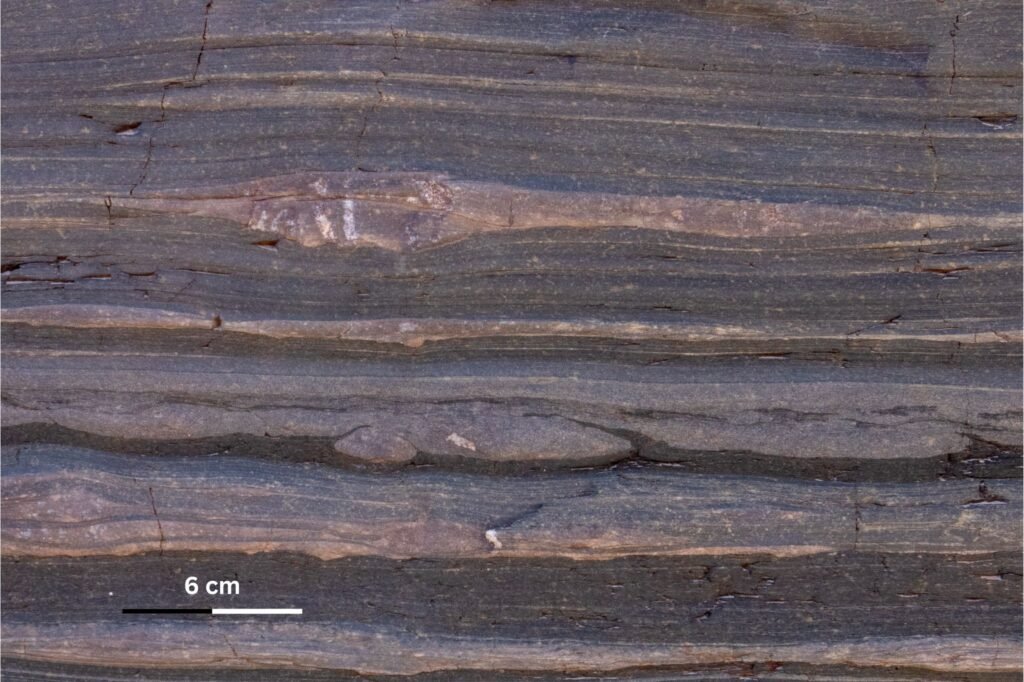
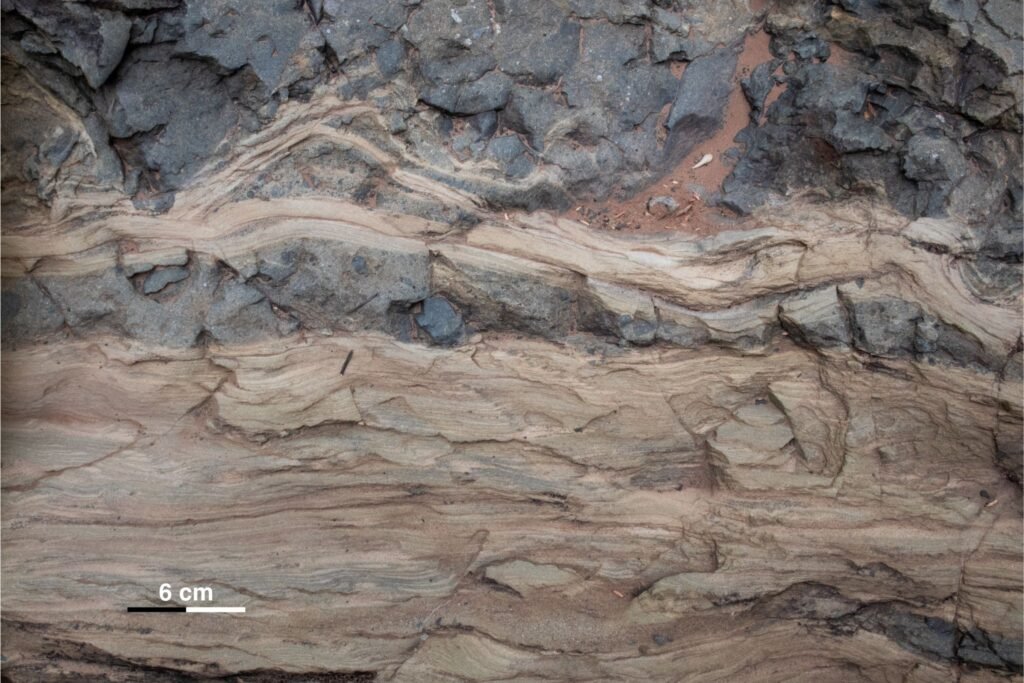
Folds form when cohesive, unconsolidated sediments are subjected to compressional or tangential forces before full lithification. In glacigenic and mass transport settings, folding may result from ice-push deformation, glaciotectonic thrusting, subglacial shearing, or slope failure and slumping. Fold geometry often reflects the style and direction of applied stress.
Significance
Folds are valuable indicators of subsurface stress orientation and deformation intensity. In glacial environments, they often record ice movement direction, bed conditions, or reorganization of sediment during mass transport. Recognition of folding; especially when combined with associated features like faults or shear planes—can help interpret depositional and post-depositional processes within dynamic sedimentary systems.
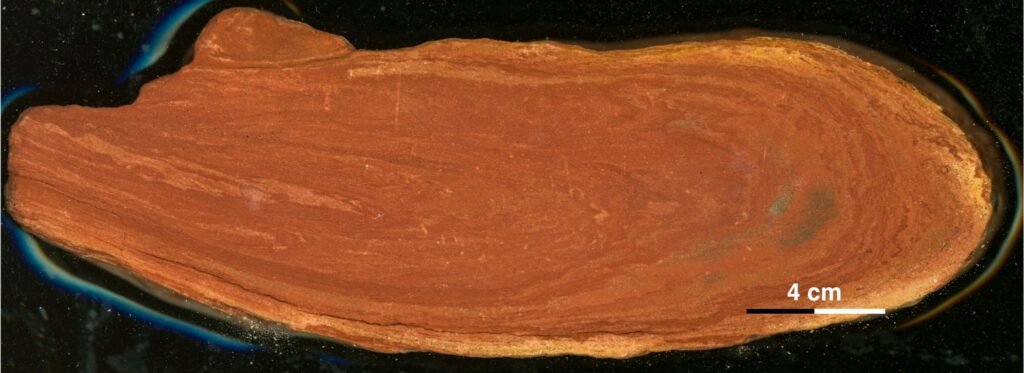
Shear planes and zones form through ductile deformation of soft, water-saturated sediments, often under conditions of subglacial drag, glaciotectonic compression, or within slow-moving debris flows. In glacial environments, shear can occur at the ice-bed interface or within subglacial deforming layers.
A key feature of many shear zones is the development of C–S fabric, where C-surfaces (shear planes) represent the direction of simple shear and S-surfaces (foliation or layering) develop oblique to it. This microstructural pattern provides insight into the strain path and kinematic conditions of deformation.
Significance
Shear planes and C–S fabrics are important indicators of directional stress and progressive strain. In glacigenic systems, they can reveal ice movement direction, bed deformation styles, and subglacial water content. Their recognition is critical for interpreting deformation histories in tills, glaciotectonites, and soft-sediment thrust complexes.
